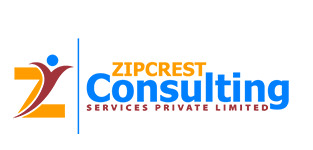#Cloud computing types
Explore tagged Tumblr posts
Text
What is Cloud Computing, and what are the types of cloud computing
Introduction
Well if you are looking for a perfect answer for what is cloud computing and are looking for the types of virtualization in cloud computing then you are at the perfect place. Cloud computing is basically a process of running tasks and applications within a cloud infrastructure. Cloud hosting services use virtualization which divide many physical server into a multiple virtual server. It uses various network of servers to host a website. In cloud computing the data is stored on physical servers which are maintained by a cloud hosting service provider.
How cloud computing works
Cloud computing works by enabling client devices to access data and cloud applications over the internet from remote physical servers, database and computers. An internet network connection links the front end which includes the accessing client, device, network, browser, and cloud software applications. Basically there is a dedicated server in cloud computing for each individual application and workload.
In cloud computing communication between the front end and back end are managed by the central server. And the central server relies on protocol for the exchange of data. Cloud computing mostly relies on virtualization and automation technologies to provide flexible service to the users. Virtualization allows for the easy allocation of resources and cloud system in to various manageable units. So that the user can access and use it easily. In Cloud computing automation and orchestration features are give a ability to the users to easily take control of their resources provisioning, workload deployment and service connectivity without any help of the cloud provider. This unique functionality provides a high degree of flexibility to the cloud users.
As now we have got to know about how does cloud computing works. Lets us now dive into the types of cloud ccmputing.
Types of cloud computing
1. Infrastructure as a service
Infrastructure as a Service (IaaS) is a type of cloud computing that provides users with access to computing resources such as servers, storage, and networking. With IaaS, users can create their own virtual machines on these resources, install their own operating systems, and run their own applications. This means that users do not have to purchase and maintain their own physical servers, but can instead use the resources of a third-party provider to meet their computing needs.
IaaS providers typically offer a range of services, such as virtual machine instances, storage options, load balancing, and network security. Users can choose the resources they need and pay for them on a pay-per-use basis. This allows them to scale their computing resources up or down depending on their changing needs, without having to invest in additional infrastructure.
2. Platform as a service
Platform as a Service (PaaS) is a type of cloud computing that provides users with a platform to develop, run, and manage their own applications, without having to worry about the underlying infrastructure. In PaaS, the provider takes care of the hardware, operating system, and middleware, while the user is responsible for the applications and data.
PaaS offers a more advanced level of abstraction than Infrastructure as a Service (IaaS), because it provides a complete development and deployment platform, rather than just computing resources. This means that users can focus on creating their applications and deploying them to the platform, without having to worry about the underlying infrastructure.
3.Software as a service
Software as a Service is a type of cloud computing where a provider offers access to a complete and functional software application through the internet. This means that users do not need to install anything on their own devices to use the software. Instead, they can access the application through a web browser or a mobile app.
SaaS applications are designed to be easy to use and accessible from anywhere, making them an attractive option for businesses and individuals who need to access software on the go or from different locations. SaaS applications are often offered on a subscription basis, which allows users to pay for the software on a monthly or yearly basis, rather than having to make a large upfront investment.
Conclusion
cloud computing is a powerful technology that is rapidly changing the way organizations think about IT infrastructure and services. By providing on-demand access to a shared pool of computing resources, cloud computing allows organizations to focus on their core business functions while minimizing the cost and complexity of managing their IT infrastructure. However, it is important for organizations to carefully evaluate their cloud computing options and to ensure that they are aware of the risks and trade-offs involved.
0 notes
Text
nichest of niche complaints of a hyper specific topic but im tired of pokemon youtubers treating the gen 3 regi braille puzzle as some inconceivable mystical thing that no child could have ever solved. like not only did the original box include a fucking braille guide but goddamn dude you really think braille is such an insane thing for children to grasp? im sorry a language made for disability access for blind/visually impaired people is so ludicrous to you that you think a child couldn't understand
#screaming at clouds type post#but this one always got my goat in a specific way like. Dude Cmon. Its not that fucking insane#you really think computers didnt exist in 2004? a child could easily look it up then even on their school computer
46 notes
·
View notes
Text


#why do you need this many legs sir#toedscruel#woah holy shit i just looked outside and it's super dark out. i'm queuing this up at noon why is it so dark#lemme look#yeah it's. dark. there's a bunch of dark evil clouds in the sky lookin like it's gonna storm oh i just heard thunder yeah it's gonna storm#uh oh. good thing i'm queueing this guy up before the storm so my power doesn't go out. this happens frequently#anyway toedscruel. it's definitely an evolution of toedscool. it definitely looks like tentacruel#if it's a different pokémon why does it evolve into something so suspiciously similar. i can understand wigglet and wugtrio being#different pokémon. just based on how different they are from diglett and dugtrio. even though their names are a typo away#but this guy is. it. really should've just been a regional form‚ i think#unrelated‚ but on random occasions seemingly whenever someone new finds the blog and reads my tags#i'll occasionally get folks asking me how i type commas in the tags#the answer is that this character → ‚ ← is not a comma. it just looks identical to a comma because of tumblr's font#it's actually a lower quotation mark. so for a language that does ‚this kind’ of quotation marks#and i use it as a comma because i have a fancy linguist keyboard that can type all kinds of fancy symbols. and it's easily accessible#some of my favorites include the single-character ellipse: …#the degrees symbol: º and °#small A: ª#fractions: 1⁄2 2⁄3 1⁄4 etc#and obviously IPA symbols and various diacritics‚ so that i can type the word pokémon without having to copy-and-paste the E#currency symbols‚ too. £¢$§¥ euro is on here somewhere but i don't know where bc i don't use that one really#i just like being able to type things the way they're supposed to be. like it's 80º outside. the stopwatch costs 15¢ in the shop#and‚ of course‚ pokémon. it's the linguistics and computer 'tism combining together i think#it's storming harder now but i found the euro symbol: €#oh fuckin hell my lights just flickered. this is gonna be rough..!
61 notes
·
View notes
Text









john bomb ( RBLXware ) stimboard for anon i was about to make one of these for myself, thank you for the request ^.^
💙| 💣| 💙 💙| 💙| 💙 💙| 💣| 💙
#stim#stimboard#gif#blue#suit#computer#keyboard#typing#tw hands#cloud#sparkle#john bomb#rblxware#john bomb rblxware#roblox#drink#lava lamp#formal#office
27 notes
·
View notes
Text

i've been manually shading this grass and having sai crash so many times in a row i might be going insane :'D
#my art#wip#at this point i will just leave it like the choppy mess it is rn cause this whole piece feels so.#not ugly or anything- but i know i can do better yfeel me?#i've been glaring at the clouds for 30 minutes trying to fix the colors but nothing woooorks#and my computer is so slow it's actually a chore going on youtube and switching tabs like istg#if you wanna know why i'm not reblogging and posting art it's cause it freezes each time i type a little too fast and it's so frustrating x#begging my poor old computer to just let me switch songs and boom. another crash like- okay.#opening anything feels like trying to defuse a bomb fr gosh >:'D#sorry sorry rant over i'm just tired 😔
41 notes
·
View notes
Text
making icons was a shot in the foot to my business strategy of posting all my replies from work and then lying about doing more when i get home.
#when i typed this post i spelled icons like eye cons? EYE CONS???????? HELLO? i need to do my job.#i cant save stuff to my work computer and im not uploading that shit to a secondary location i dont believe in tha cloud#certified cowboy enjoyer. ↠ ooc.
2 notes
·
View notes
Text
it seems like every 6 months there's some new panic on my dash about google docs' TOS and also every 6 months I'm confused about why so many people still use google docs. I thought this was the "fuck google chrome, switch to Firefox" website so where is the same enthusiasm for word processing alternatives. please love yourselves and download libreoffice or something
#i can't have a high horse about this as i type this on my google phone#but I've never used google docs just bc i don't like it so It's not familiar to me#so i don't understand the attachment to it#also I don't like web apps. documents belong on my computer not a cloud#i mean mine are backed up to a dropbox but that's not where they live. you understand#reilly.txt
1 note
·
View note
Text
What Does a Cloud Migration Supplier Do?
Introduction
Cloud computing has revolutionized how businesses operate, offering scalable, secure, and cost-efficient solutions for data management and application deployment. As organizations increasingly transition from on-premises infrastructure to cloud environments, the role of a cloud migration supplier has become crucial. These specialized providers assist businesses in moving their workloads to cloud platforms efficiently while ensuring security, compliance, and performance optimization.
In this article, we will explore the responsibilities of a cloud migration supplier, the future of cloud computing, cloud computing and its types, the impact of cloud-based services in AI, and the significance of cloud application testing in the migration process.
What Is a Cloud Migration Supplier?
A cloud migration supplier is a company or service provider that facilitates the transition of applications, data, and workloads from traditional on-premises environments to cloud-based platforms. These suppliers assess an organization's infrastructure, develop a migration strategy, execute the transition, and ensure post-migration optimization. They provide end-to-end support, including security assessments, performance enhancements, and compliance monitoring.
Key Responsibilities of a Cloud Migration Supplier
Cloud Readiness Assessment:
Evaluating existing IT infrastructure, applications, and workloads.
Identifying compatibility issues and potential challenges in migration.
Developing a Cloud Migration Strategy:
Choosing the appropriate cloud model (public, private, or hybrid).
Defining migration objectives, risk management strategies, and timelines.
Executing the Migration Process:
Data transfer and replication.
Application rehosting, refactoring, or rearchitecting.
Ensuring minimal downtime and data loss.
Post-Migration Optimization and Support:
Performance tuning for optimal resource utilization.
Security and compliance monitoring.
Continuous cloud management and cost optimization.
Cloud Computing and Its Types
Understanding cloud computing and its types is fundamental to the migration process. Cloud computing delivers computing services—such as storage, networking, and AI processing—over the internet. It provides flexibility, scalability, and cost-efficiency for businesses.
Types of Cloud Computing
Public Cloud:
Managed by third-party providers like AWS, Azure, and Google Cloud.
Shared infrastructure with multiple tenants.
Cost-effective and scalable for businesses of all sizes.
Private Cloud:
Dedicated infrastructure for a single organization.
Enhanced security and compliance.
Suitable for enterprises with strict data control requirements.
Hybrid Cloud:
A combination of public and private clouds.
Allows workload distribution based on security and performance needs.
Offers flexibility and enhanced disaster recovery options.
Multi-Cloud:
Utilization of multiple cloud providers.
Avoids vendor lock-in and optimizes performance across different platforms.
A cloud migration supplier helps businesses determine the most suitable cloud model based on their operational needs and regulatory requirements.
The Future of Cloud Computing
The future of cloud computing is rapidly evolving with technological advancements, making cloud environments more intelligent, secure, and interconnected. Businesses adopting cloud solutions gain competitive advantages in automation, data analytics, and AI-driven applications.
Emerging Trends in Cloud Computing
Edge Computing Integration:
Enhances real-time data processing by reducing latency.
Supports IoT applications and decentralized computing.
AI-Powered Cloud Services:
Automates cloud management and security protocols.
Enhances predictive analytics for business intelligence.
Serverless Computing:
Eliminates infrastructure management needs.
Allows developers to focus on code deployment without worrying about server maintenance.
Enhanced Cloud Security Measures:
AI-driven threat detection and automated response mechanisms.
Zero-trust architecture for secure cloud environments.
Sustainable Cloud Computing:
Focuses on green data centers and energy-efficient cloud infrastructures.
Reduces the carbon footprint of cloud service providers.
Cloud migration suppliers stay ahead of these trends to provide businesses with innovative solutions tailored to their growth and security needs.
Cloud-Based Services in AI
The integration of cloud based services in AI has transformed industries by providing scalable computing power and vast storage capabilities. Cloud platforms enable businesses to deploy AI models efficiently without investing in expensive on-premises infrastructure.
How Cloud-Based AI Services Benefit Businesses
Scalability and Flexibility:
AI workloads can scale dynamically based on demand.
Businesses can deploy AI applications without infrastructure constraints.
Cost Efficiency:
Reduces hardware costs associated with AI training and deployment.
Pay-as-you-go pricing models optimize IT budgets.
Faster AI Model Training and Deployment:
Cloud platforms provide high-performance computing resources.
Accelerates AI-driven decision-making processes.
Improved Data Management:
Cloud storage enables easy access to large datasets for AI training.
Ensures compliance with data governance and security standards.
A cloud migration supplier ensures seamless integration of AI-driven solutions into cloud environments, maximizing efficiency and innovation for businesses.
Importance of Cloud Application Testing
As businesses migrate applications to the cloud, cloud application testing becomes essential to ensure performance, security, and reliability. A cloud migration supplier incorporates comprehensive testing strategies to mitigate risks and optimize application functionality.
Key Aspects of Cloud Application Testing
Performance Testing:
Evaluates application scalability under varying workloads.
Identifies latency issues and optimizes resource allocation.
Security Testing:
Detects vulnerabilities and ensures compliance with security standards.
Implements encryption, authentication, and access control measures.
Compatibility Testing:
Ensures seamless integration with different cloud environments.
Verifies compatibility across various devices and operating systems.
Disaster Recovery Testing:
Validates data backup and recovery processes.
Ensures business continuity in case of cloud failures.
Usability Testing:
Enhances user experience by identifying functional gaps.
Optimizes cloud applications for performance and accessibility.
By implementing rigorous cloud application testing, businesses can ensure a seamless transition to cloud environments while maintaining service quality and reliability.
Conclusion
A cloud migration supplier plays a critical role in helping businesses navigate their digital transformation journey. From evaluating infrastructure and executing migrations to optimizing cloud environments, these providers ensure a smooth transition with minimal disruption. As the future of cloud computing evolves, businesses must embrace cloud-based services in AI, implement robust cloud application testing, and leverage various types of cloud computing to stay ahead of the competition.
By partnering with a cloud migration supplier, organizations can unlock the full potential of cloud technology, achieving greater efficiency, scalability, and innovation in their operations. Cloud migration is no longer just an IT initiative—it is a strategic move that drives business growth in the digital era.
#cloud migration supplier#future of cloud computing#cloud computing and its types#cloud based services in ai#Cloud application Testing
0 notes
Text
Cloud computing delivers services over the internet, allowing users to access and store data remotely. It includes services such as storage, processing power, and software applications. This technology enables scalability, flexibility, and cost-efficiency, transforming how individuals and businesses manage resources and collaborate. Click here to learn more.
0 notes
Text
One thing I'll give ppl who save stuff online is that it would be nice to read my unposted stuff when I'm away from my computer
#i prefer not to type fic on my phone if i can help it#it just feels too small and cluttered#ill do it to help writers block or if im away and i really wanna write smth down before i forget#and some oneshots feel more appropriate to write on my phone and cozy in bed#but overall like 80% of my shit is written on my computer#and like call me a boomer but i do not trust the cloud to save shit#also i dont like needing an internet connection to work on stuff#tho thats leftover from having shiternet growing up in the middle of nowhere#but it would be nice to reread stuff ive written but havent posted yet on my phone#oh well#enjoy my midnight ramblings
1 note
·
View note
Text
Best Cloud Solutions Company in Zirakpur - Nextwork Technologies
In today’s rapidly evolving digital world, businesses increasingly rely on cloud services for seamless data management and enhanced operational efficiency. If you’re searching for the best cloud solutions company in Zirakpur, look no further than Nextwork Technologies. Our innovative cloud computing solutions cater to businesses of all sizes, offering secure, scalable, and reliable services designed to meet the growing demands of the digital landscape.
What is Cloud Computing?
Cloud computing refers to the delivery of various computing services—like servers, storage, databases, networking, and software—over the internet (“the cloud”). It allows businesses to access and store data, run applications, and process information without relying on physical infrastructure.
Types of Cloud Computing Services
When choosing a cloud solutions provider, understanding the types of cloud computing services is crucial. There are three primary models:
Infrastructure as a Service (IaaS): Offers virtualized computing resources such as servers, networks, and storage.
Platform as a Service (PaaS): Provides a platform allowing developers to build and deploy applications without managing the underlying infrastructure.
Software as a Service (SaaS): Delivers software applications over the internet, eliminating the need for local installation.
Why Choose Nextwork Technologies?
As the best cloud services provider in Zirakpur, Nextwork Technologies offers a comprehensive suite of cloud solutions that can transform your business operations. Our services are tailored to meet your specific needs, from cloud storage to computing power.
Advantages of Cloud Computing
Partnering with a top cloud solutions company like Nextwork Technologies provides multiple advantages, including:
Cost Efficiency: Reduce IT operational costs by using cloud infrastructure and only paying for what you use.
Scalability: Easily scale up or down your resources based on your business demands.
Security: Our cloud solutions ensure the highest level of security, safeguarding your data from unauthorized access.
Accessibility: Access your data and applications from anywhere, at any time, improving collaboration and productivity.
Backup and Recovery: Ensure data protection with automatic backups and quick disaster recovery options.
Cloud Service Platforms
Cloud computing relies on several leading platforms to offer services. The top platforms we work with include:
Amazon Web Services (AWS)
Microsoft Azure
Google Cloud
IBM Cloud
These platforms are known for their reliability, extensive features, and global reach, making them the backbone of modern cloud computing.
Top Data Center Providers in India
To ensure efficient cloud services, having access to a reliable data center is essential. India is home to some of the world’s top data center companies. These centers play a pivotal role in hosting cloud platforms and ensuring uptime for cloud applications. Here are some of the largest data center operators in India:
CtrlS: Known for operating the country’s largest Tier 4 data center.
Netmagic: A key player providing data hosting and cloud solutions.
Yotta Infrastructure: Hosts one of India’s biggest data centers in Mumbai.
Sify Technologies: Offers robust cloud and data center services.
STT GDC India: Provides data centers across major Indian cities, including Mumbai, Delhi, and Bengaluru.
How Nextwork Technologies Fits Into the Ecosystem
Nextwork Technologies partners with some of these top data centers in India to provide unparalleled cloud solutions. Our cloud infrastructure is hosted on state-of-the-art data centers, ensuring high availability, security, and performance for our clients.
Data Centers in India – The Backbone of Cloud Services
India has seen significant growth in data center infrastructure, with new players entering the market and existing providers expanding their facilities. The country is fast becoming a hub for global cloud service providers due to its growing internet penetration, strong IT industry, and competitive power costs.
If you're seeking India’s biggest data center or looking to collaborate with the best data center companies in India, you’ll want to consider operators like CtrlS, STT GDC, and Netmagic, all of which offer top-tier facilities.
Nextwork Technologies – Your Cloud Partner in Zirakpur
As a leading cloud solutions provider in Zirakpur, Nextwork Technologies delivers unmatched cloud computing services powered by cutting-edge data center technology. We are dedicated to helping businesses move their operations to the cloud with ease, ensuring a smooth transition and long-term success.
Our Services Include:
Cloud Storage: Offering scalable and secure storage solutions for businesses.
Data Backup and Recovery: Ensuring that your business-critical data is protected with real-time backups and recovery options.
Application Hosting: Providing a reliable platform for hosting web applications and databases.
Cloud Consultation: Guiding businesses through their cloud adoption journey by offering expert advice on the best solutions for their needs.
How to Choose the Best Cloud Solutions Company
When choosing the best cloud computing solution in Zirakpur, consider factors like experience, security measures, scalability, and customer support. Nextwork Technologies excels in all these areas, offering a range of services customized to suit your business’s requirements.
Here’s what sets us apart:
Extensive Experience: With over a decade of expertise in cloud computing, we��ve helped numerous businesses transition smoothly to the cloud.
Top-Tier Security: We employ advanced security measures like encryption and multi-factor authentication to protect your data.
Customer Support: Our support team is available 24/7 to assist with any technical issues or questions you may have.
Customizable Plans: Our cloud solutions are flexible, allowing businesses to scale their resources based on real-time needs.
Conclusion: Future-Proof Your Business with Nextwork Technologies
With cloud computing becoming a critical component of modern business, partnering with the best cloud solutions company in Zirakpur is a smart move. Nextwork Technologies is committed to providing world-class cloud services that help businesses grow, innovate, and succeed in a competitive environment. Our solutions are designed to be flexible, secure, and efficient—empowering you to achieve operational excellence.
Whether you’re a small startup or a large enterprise, our cloud services can be tailored to meet your unique business needs. So why wait? Contact us today and take the first step toward a more efficient and scalable future.
#top data center providers in india#types of cloud computing#cloud service platforms#Cloud Computing Solution in Zirakpur
0 notes
Text
it's actually really annoying to find out your card is expired after you no longer have proof of residence (like a utility bill or rental agreement; some kind of official document that has both a date and an address on it because library membership is free for the city/municipality it serves, otherwise you have to pay per year for membership/active card), so your library won't renew your card unless you re-apply as out-of-city and you have to pay per month or year of membership. but you know, who cares if you're technically homeless/living out of your car/friend's couches

#idk if it's just Austin TX & the increasing homeless population here. but they make you renew your library card every 2 years#i think i reblogged this before. generally im 'pro library' or whatever. but the first statement is very very annoying to me now#libraries are great and are generally a good info resource/center for homeless people but#also some cities/municipalities also enact NIMBY-type anti-homeless/poverty cop shit that will kick you out of libraries for looking poor#libraries are usually free if you're housed and can prove that you live in the service area. but if you dont have proof u usually gotta pay#full library access (to computers & other resources) are often barred with some kind of $ if you're at the absolute bottom of society#which like. $30 is not much money for a little library card for a year but that's money for food/other necessities if you have nothing#if library access was as the twitter caption says then no libraries would have these kinds of policies/requirements#like they could even make a different kind of card that's free for anyone that's only the digital media if they're so concerned about#lending/not returning of the physical books. it's not something I've heard about though#chen yells at clouds. more at 10
52K notes
·
View notes
Text
#Europe Insurtech Market Report by Type (Auto#Business#Health#Home#Specialty#Travel#and Others)#Service (Consulting#Support and Maintenance#Managed Services)#Technology (Blockchain#Cloud Computing#IoT#Machine Learning#Robo Advisory#and Country 2024-2032
0 notes
Text
Improving drug development with a vast map of the immune system
New Post has been published on https://thedigitalinsider.com/improving-drug-development-with-a-vast-map-of-the-immune-system/
Improving drug development with a vast map of the immune system


The human immune system is a network made up of trillions of cells that are constantly circulating throughout the body. The cellular network orchestrates interactions with every organ and tissue to carry out an impossibly long list of functions that scientists are still working to understand. All that complexity limits our ability to predict which patients will respond to treatments and which ones might suffer debilitating side effects.
The issue often leads pharmaceutical companies to stop developing drugs that could help certain patients, halting clinical trials even when drugs show promising results for some people.
Now, Immunai is helping to predict how patients will respond to treatments by building a comprehensive map of the immune system. The company has assembled a vast database it calls AMICA, that combines multiple layers of gene and protein expression data in cells with clinical trial data to match the right drugs to the right patients.
“Our starting point was creating what I call the Google Maps for the immune system,” Immunai co-founder and CEO Noam Solomon says. “We started with single-cell RNA sequencing, and over time we’ve added more and more ‘omics’: genomics, proteomics, epigenomics, all to measure the immune system’s cellular expression and function, to measure the immune environment holistically. Then we started working with pharmaceutical companies and hospitals to profile the immune systems of patients undergoing treatments to really get to the root mechanisms of action and resistance for therapeutics.”
Immunai’s big data foundation is a result of its founders’ unique background. Solomon and co-founder Luis Voloch ’13, SM ’15 hold degrees in mathematics and computer science. In fact, Solomon was a postdoc in MIT’s Department of Mathematics at the time of Immunai’s founding.
Solomon frames Immunai’s mission as stopping the decades-long divergence of computer science and the life sciences. He believes the single biggest factor driving the explosion of computing has been Moore’s Law — our ability to exponentially increase the number of transistors on a chip over the past 60 years. In the pharmaceutical industry, the reverse is happening: By one estimate, the cost of developing a new drug roughly doubles every nine years. The phenomenon has been dubbed Eroom’s Law (“Eroom” for “Moore” spelled backward).
Solomon sees the trend eroding the case for developing new drugs, with huge consequences for patients.
“Why should pharmaceutical companies invest in discovery if they won’t get a return on investment?” Solomon asks. “Today, there’s only a 5 to 10 percent chance that any given clinical trial will be successful. What we’ve built through a very robust and granular mapping of the immune system is a chance to improve the preclinical and clinical stages of drug development.”
A change in plans
Solomon entered Tel Aviv University when he was 14 and earned his bachelor’s degree in computer science by 19. He earned two PhDs in Israel, one in computer science and the other in mathematics, before coming to MIT in 2017 as a postdoc to continue his mathematical research career.
That year Solomon met Voloch, who had already earned bachelor’s and master’s degrees in math and computer science from MIT. But the researchers were soon exposed to a problem that would take them out of their comfort zones and change the course of their careers.
Voloch’s grandfather was receiving a cocktail of treatments for cancer at the time. The cancer went into remission, but he suffered terrible side effects that caused him to stop taking his medication.
Voloch and Solomon began wondering if their expertise could help patients like Voloch’s grandfather.
“When we realized we could make an impact, we made the difficult decision to stop our academic pursuits and start a new journey,” Solomon recalls. “That was the starting point for Immunai.”
Voloch and Solomon soon partnered with Immunai scientific co-founders Ansu Satpathy, a researcher at Stanford University at the time, and Danny Wells, a researcher at the Parker Institute for Cancer Immunotherapy. Satpathy and Wells had shown that single-cell RNA sequencing could be used to gain insights into why patients respond differently to a common cancer treatment.
The team began analyzing single-cell RNA sequencing data published in scientific papers, trying to link common biomarkers with patient outcomes. Then they integrated data from the United Kingdom’s Biobank public health database, finding they were able to improve their models’ predictions. Soon they were incorporating data from hospitals, academic research institutions, and pharmaceutical companies, analyzing information about the structure, function, and environment of cells — multiomics — to get a clearer picture of immune activity.
“Single cell sequencing gives you metrics you can measure in thousands of cells, where you can look at 20,000 different genes, and those metrics give you an immune profile,” Solomon explains. “When you measure all of that over time, especially before and after getting therapy, and compare patients who do respond with patients who don’t, you can apply machine learning models to understand why.”
Those data and models make up AMICA, what Immunai calls the world’s largest cell-level immune knowledge base. AMICA stands for Annotated Multiomic Immune Cell Atlas. It analyzes single cell multiomic data from almost 10,000 patients and bulk-RNA data from 100,000 patients across more than 800 cell types and 500 diseases.
At the core of Immunai’s approach is a focus on the immune system, which other companies shy away from because of its complexity.
“We don’t want to be like other groups that are studying mainly tumor microenvironments,” Solomon says. “We look at the immune system because the immune system is the common denominator. It’s the one system that is implicated in every disease, in your body’s response to everything that you encounter, whether it’s a viral infection or bacterial infection or a drug that you are receiving — even how you are aging.”
Turning data into better treatments
Immunai has already partnered with some of the largest pharmaceutical companies in the world to help them identify promising treatments and set up their clinical trials for success. Immunai’s insights can help partners make critical decisions about treatment schedules, dosing, drug combinations, patient selection, and more.
“Everyone is talking about AI, but I think the most exciting aspect of the platform we have built is the fact that it’s vertically integrated, from wet lab to computational modeling with multiple iterations,” Solomon says. “For example, we may do single-cell immune profiling of patient samples, then we upload that data to the cloud and our computational models come up with insights, and with those insights we do in vitro or in vivo validation to see if our models are right and iteratively improve them.”
Ultimately Immunai wants to enable a future where lab experiments can more reliably turn into impactful new recommendations and treatments for patients.
“Scientists can cure nearly every type of cancer, but only in mice,” Solomon says. “In preclinical models we know how to cure cancer. In human beings, in most cases, we still don’t. To overcome that, most scientists are looking for better ex vivo or in vivo models. Our approach is to be more agnostic as to the model system, but feed the machine with more and more data from multiple model systems. We’re demonstrating that our algorithms can repeatedly beat the top benchmarks in identifying the top preclinical immune features that match to patient outcomes.”
#000#aging#ai#Algorithms#Alumni/ae#approach#background#benchmarks#Big Data#biomarkers#Building#Cancer#cancer treatment#career#Careers#cell#cell types#Cells#CEO#change#Cloud#Companies#complexity#comprehensive#computer#Computer Science#computing#course#data#Database
0 notes
Text
Navigating Cloud Horizons: Understanding the Diverse Cloud Computing Services with Zipcrest Consulting Services Pvt Ltd

In the ever-expanding realm of digital transformation, cloud computing stands as a cornerstone, revolutionizing the way businesses operate and manage their IT infrastructure. As an authorized channel partner of Tata Tele Business Services, Zipcrest Consulting Services Pvt Ltd offers profound insights into the diverse spectrum of cloud computing services. This blog post explores the types of cloud services and the strategic guidance that Zipcrest provides to businesses venturing into the cloud.
Also Read - Managed Security Services Provider
Infrastructure as a Service (IaaS):
Zipcrest Consulting Services Pvt Ltd guides businesses through the foundational layer of cloud services – Infrastructure as a Service (IaaS). With IaaS, businesses can access virtualized computing resources over the internet, including servers, storage, and networking. Zipcrest ensures that businesses leverage IaaS to scale their infrastructure seamlessly, reducing the need for physical hardware investments.
Platform as a Service (PaaS):
As businesses seek to streamline application development and deployment, Zipcrest introduces them to Platform as a Service (PaaS). This cloud service provides a platform that includes tools and services for building, testing, and deploying applications. With PaaS, businesses can accelerate their development cycles, enhance collaboration, and achieve greater agility in responding to market demands.
Software as a Service (SaaS):
Zipcrest's expertise extends to Software as a Service (SaaS), a cloud computing model that delivers software applications over the internet. Whether it's email services, customer relationship management (CRM), or collaborative tools, Zipcrest ensures that businesses harness the benefits of SaaS to access powerful applications without the burden of managing the underlying infrastructure.
Managed Cloud Services:
Understanding the complexities of cloud management, Zipcrest introduces businesses to Managed Cloud Services. This approach involves outsourcing certain cloud management tasks to a service provider, allowing businesses to focus on their core competencies while Zipcrest handles critical aspects such as security, monitoring, and optimization of cloud resources.
Strategic Cloud Migration:
Zipcrest Consulting Services Pvt Ltd recognizes that cloud adoption is not a one-size-fits-all approach. As businesses contemplate migrating to the cloud, Zipcrest offers strategic guidance on the most suitable cloud service models based on their unique needs, ensuring a seamless and strategic transition to the cloud.
Quoting Ajit, Marketing head at Zipcrest Consulting Services Pvt Ltd:
"At Zipcrest, we view cloud computing not just as a technology shift but a strategic transformation. Our role is to guide businesses through the diverse cloud computing services, ensuring they make informed decisions that align with their goals, optimize resources, and enhance overall operational efficiency."
Conclusion:In the dynamic landscape of cloud computing, businesses require more than just services – they need strategic guidance to navigate the vast possibilities effectively. Zipcrest Consulting Services Pvt Ltd, as an authorized channel partner of Tata Tele Business Services, emerges as a trusted ally in this journey. Whether it's IaaS, PaaS, SaaS, or Managed Cloud Services, Zipcrest ensures that businesses not only understand these cloud computing types but also leverage them strategically to propel their digital transformation forward. In choosing Zipcrest, businesses gain a partner committed to unlocking the full potential of cloud computing and guiding them toward a future of enhanced efficiency and innovation.
0 notes